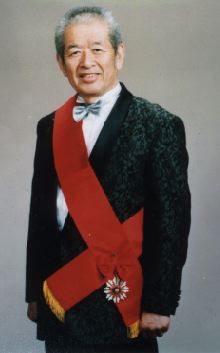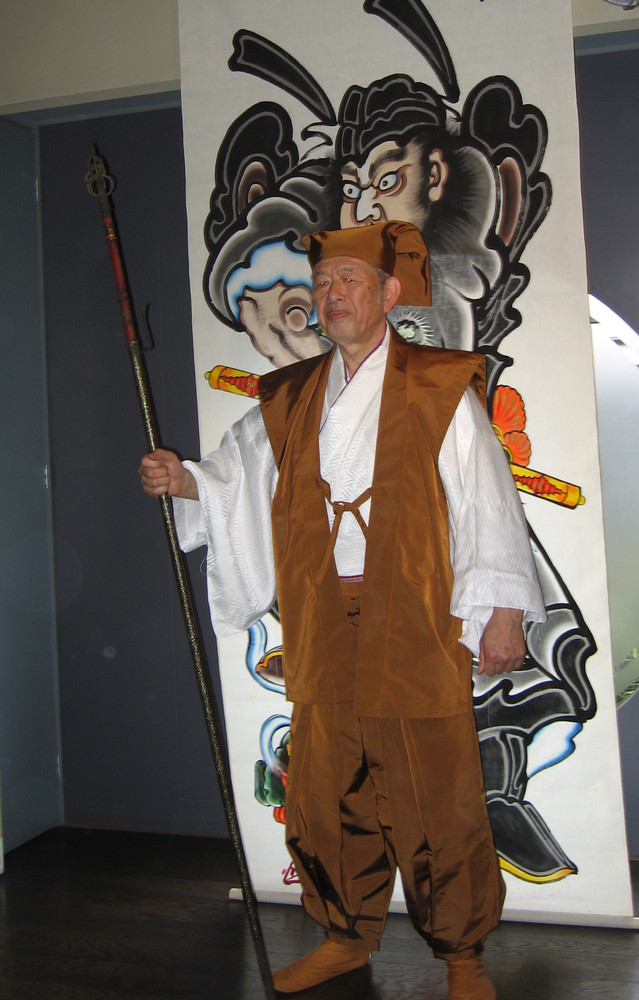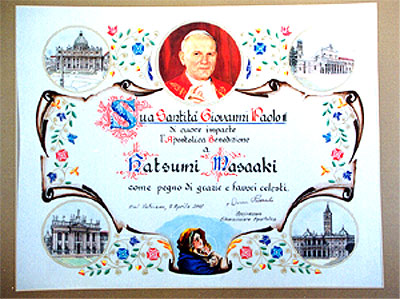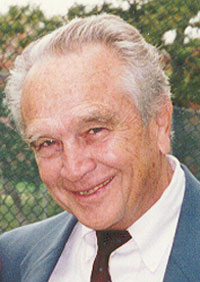About Ninjitsu
Ninjitsu is the ancient art of the ninja warriors of Japan. it is also referred to as the art of Timing distance & Balance.
It is a unique method of moving and thinking which is referred to as the art of not losing we do not use the word winning as in Ninjutsu you will not enter competitions, get medals or trophies.
You will just go home and be appreciated by your family & friends.
Referred to as the Warrior creed written by Robert L. Humphrey:
Wherever I go, everyone is a little bit safer because I am there.
Wherever I am, anyone in need has a friend.
Whenever I return home, everyone is happy I am there.
"It's a better life!"
Wherever I go, everyone is a little bit safer because I am there.
Wherever I am, anyone in need has a friend.
Whenever I return home, everyone is happy I am there.
"It's a better life!"

The art of Ninjutsu also has a very unique grading system. A students assessment is on all their training days and on the days when they are not training, on how the treat other people and family, not just specific grading days like in other Arts. Taijustu is the basic of the Art, Taijutsu is a relaxed continuos movement of the body allowing us to create a never ending supply of effective counters in any given defense situation and is unique to Ninjitsu. Ninjitsu is a complete fighting system dealing with the Physical, mental and spiritual aspects of student development. Techniques cover locks, throws, ground fighting, multiple attackers, modern weaponry and traditional Ninjitsu weaponry. In Ninjitsu everything can be utilized as a weapon there is no restrictions within taijutsu.
There are 9 schools withing Ninjitsu:
- Togakure-Ryu Ninpo Taijutsu
This school is known in the Bujinkan as the school where all the Ninjutsu techniques come from. Hatsumi sôke is the 34'th generation grandmaster. - Gyokko-Ryu Kosshijutsu
This school is perhaps the school that have the biggest influence of the unarmed basics in Bujinkan, such as Sanshin no kata, and Kihon-happô. Striking with the fingers and toes is very characteristic of this style of fighting. Hatsumi sôke is the 28'th generation grandmaster. - Koto-Ryu Koppojutsu
This school's speciality is the art of manipulating the bone structure. Hatsumi sôke is the 18'th generation grandmaster. - Shindenfudo-Ryu Dakentaijutsu
The school is characterized as a style that emphasizes natural movements. Hatsumi sôke is the 26'th generation grandmaster. - Gyokushin-Ryu Ninpo Happo Biken
This school has not been taught that much yet. Hatsumi sôke is the 21'st generation grandmaster. - Kukishinden-Ryu Dakentaijutsu Happo Bikken
The school is most famous in Bujinkan for it's many weapons techniques such as sword, spear, halberd and staffs of various lengths. Hatsumi sôke is the 28'th generation grandmaster. - Gikan-Ryu Koppo Taijutsu
This school has not been taught that much yet. Hatsumi sôke is the 15'th generation grandmaster. - Takagiyoshin-Ryu Jutaijutsu
The school is a self defence style both Jûjutsu unarmed close combat techniques, and mûtô-dori unarmed against sword attacks. Hatsumi sôke is the 26'th generation grandmaster. - Kumogakure-Ryu Ninpo Happo Bikken
This school has not been taught that much yet. Hatsumi sôke is the 15'th generation grandmaster.

Masaaki Hatsumi
Masaaki Hatsumi, formerly Yoshiaki Hatsumi, is the founder of the Bujinkan Organization and claims to be the current Togakure-ryu Soke. He was born on December 2, 1931 in Noda, Chiba Prefecture, Japan. He currently resides and teaches in Noda, Chiba, Japan.
Quotes from Soke:
The techniques are initially practiced with the consciousness directed towards understanding the purpose and practical application of the physical movements. Next, the student begins to work on making his technique a natural part of knowledge; in effect, allowing his body to develop the natural ability to perform the technique. Finally, the technique itself is dropped from consciousness as a technique, and becomes yet one more variation of the body and personality to handle things in an effective manner.
The head is just another part of the body, and we must learn to overcome the tendency to make distinction between the brain and the other internal organs of the body. The body knows how to move if we let it, and it does not require active mental control to respond properly in a threatening situation. The student of ninjutsu works to eliminate the unwieldy process of first mechanically thinking through a response before actually carrying it out. This naturalness of movement results from learning how all the functions work in coordination and balance with each other.
The enemy who is against the laws of nature will lose his battle before he begins to fight. The first priority to the ninja is to not loose without fighting.
You are not just fighting one opponent. You are fighting the unknown.
I am teaching 'shin gi tai ichi.' (Bringing spirit [shin], skill [gi] and body [tai],into one [ichi]).
You must not stop in the middle of waza, make your waza alive, without a natural flow your waza cannot be alive
The head is just another part of the body, and we must learn to overcome the tendency to make distinction between the brain and the other internal organs of the body. The body knows how to move if we let it, and it does not require active mental control to respond properly in a threatening situation. The student of ninjutsu works to eliminate the unwieldy process of first mechanically thinking through a response before actually carrying it out. This naturalness of movement results from learning how all the functions work in coordination and balance with each other.
The enemy who is against the laws of nature will lose his battle before he begins to fight. The first priority to the ninja is to not loose without fighting.
You are not just fighting one opponent. You are fighting the unknown.
I am teaching 'shin gi tai ichi.' (Bringing spirit [shin], skill [gi] and body [tai],into one [ichi]).
You must not stop in the middle of waza, make your waza alive, without a natural flow your waza cannot be alive

Awards
Bujinkan Founder Honored by Japanese Government
Masaaki Hatsumi, founder and grandmaster of the Bujinkan Dojo, has been awarded the International Culture Award by the Japanese government. The award, the highest honor given for cultural exchange, was presented to Dr. Hatsumi by a member of the Imperial Household on November 22, 1999.
"This award is a great honor for the Bujinkan," stated Dr. Hatsumi at the presentation ceremony. Dr. Hatsumi is the 92nd recipient of this prestigious honor to date. Dr. Hatsumi was nominated for his cross-cultural leadership in martial arts instruction.
Papal Award
Masaaki Hatsumi has become the first budoka in history to be awarded an
Apostolic Blessing by the Vatican. The certificate, which arrived in Japan
in May 2001, bears a painting of Pope John Paul and states the following:
It translates into English as the following:
The blessing can be viewed as an affirmation of the good that Hatsumi-sensei has brought to the world through his teachings and travels.
Sua Santita' Giovanni Paolo II
Di cuore imparte
l'Apostolica Benedizione
a
Hatsumi Masaaki
Come pegno di grazie e favori celesti
Di cuore imparte
l'Apostolica Benedizione
a
Hatsumi Masaaki
Come pegno di grazie e favori celesti
It translates into English as the following:
His Holiness John Paul II
Heartily Bestows
The Apostolic Blessing
To
Hatsumi Masaaki
As a Token of Celestial Graces and Favors
Heartily Bestows
The Apostolic Blessing
To
Hatsumi Masaaki
As a Token of Celestial Graces and Favors
The blessing can be viewed as an affirmation of the good that Hatsumi-sensei has brought to the world through his teachings and travels.

The Warrior Creed
by Robert L. Humphrey (Marine Rifle Platoon Commander on Iwo Jima & Bujinkan 10th Dan)
Wherever I go,
everyone is a little bit safer because I am there.
Wherever I am,
anyone in need has a friend.
Whenever I return home,
everyone is happy I am there.
"It's a better life!"

Robert L. Humphrey
Charlie's Law
by Murray Taylor